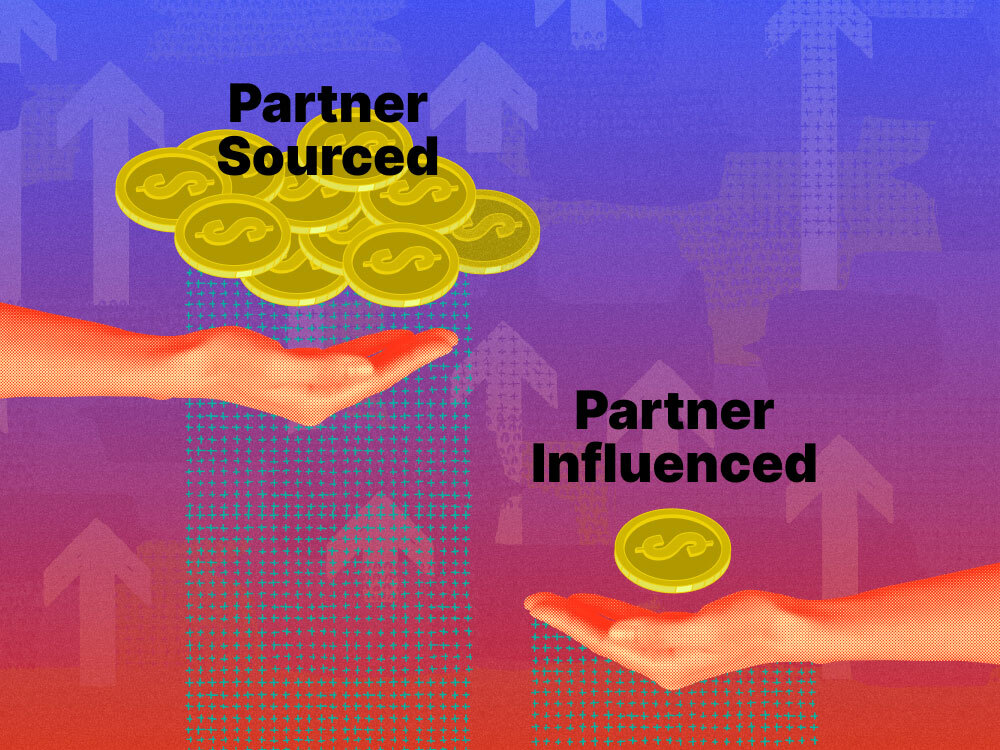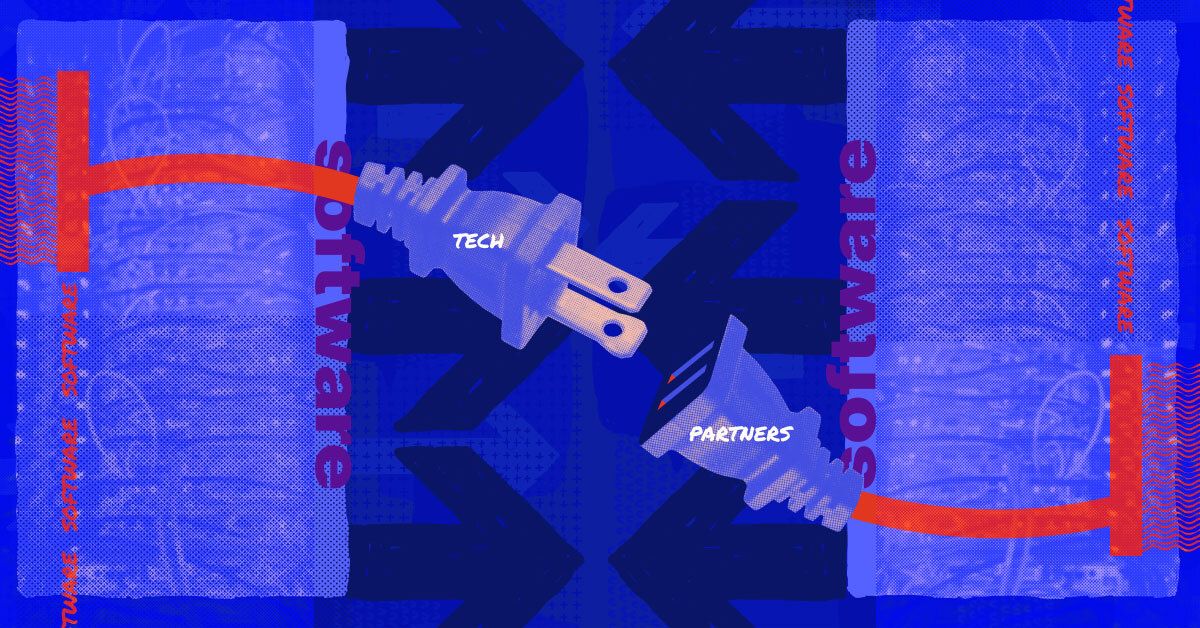No partner initiative hits the bullseye right away. You need to monitor its performance to improve it over time. You can't start a program and let it run on autopilot — success won't magically happen without some strategic goal setting.
Whether ramping up an existing program or setting strategic partnership metrics from the start, measuring key performance indicators (KPIs) will help you build and grow an effective, money-making partnership program.
Why is measuring metrics important? For one, it'll help you direct your resources toward sales channels, bringing in the most profits. It also lets you pinpoint areas that need improvement, enabling you to plan your activities and finances properly.
Related: Here are the KPIs you should measure and optimize.
How to select the right revenue-driving KPIs for your partnerships
Selecting the right revenue-driving KPIs for partnerships requires a nuanced approach based on your overall business objectives.
Define your partnership goals: Before selecting the right KPIs, clearly define your partnership program's goals. Are you looking to increase brand awareness, drive lead generation, boost sales or expand into new markets? Understanding the desired outcomes will help you identify the metrics that matter most.
Match KPIs to business objectives: Once you have defined your partnership goals, see if your chosen KPIs align directly with the overall objectives of your organization. For example, if your primary purpose is to increase revenue, you might consider honing in on KPIs such as total revenue generated, customer acquisition cost (CAC) or customer lifetime value (CLV).
Consider the partnership type: Different types of partnerships may require different KPIs. For example, if your partner program drives leads through link tracking, you might track metrics like click-through rates, conversion rates and commissions earned. If you're partnering with an influencer, you may focus on engagement rates, reach and traffic generated.
Set KPI for your business segment and maturity
Key performance indicators are essential for measuring a business's success but cannot be a one-size-fits-all approach. Different industries, business models and growth stages require different sets of KPIs to track progress effectively and identify areas for improvement.
For instance, a SaaS company might prioritize KPIs like monthly recurring revenue (MRR), customer acquisition cost (CAC) and churn rate, as these metrics are directly tied to their subscription-based business model. On the other hand, an e-commerce business would likely focus on KPIs such as conversion rate, average order value and cart abandonment rate, as these indicators directly impact their ability to generate sales.
Businesses at different growth stages may require different KPIs, even within the same industry. A startup might prioritize partner acquisition and engagement metrics, while an established enterprise company might focus more on customer retention, revenue growth and profitability.
Essential KPIs for effective partnership management
Keep an eye on the following metrics as they matter at any stage of your program. But pay extra attention in the early days as they give you a heads-up on where your growth might be heading.
Track total revenue generated by partners
Tracking revenue numbers is one of the most fundamental things to watch when running a partner program. After all, the main goal is to increase sales through partnerships. But measuring partner-driven revenue isn't always straightforward — there are different ways to measure deal attribution.
Partner-sourced revenue: The money that comes directly from deals that partners bring in themselves — sales that likely wouldn't have happened without that partner's involvement and are tracked through links or lead forms.
Partner-influenced revenue: The indirect money partners help generate by giving your internal sales team a hand in advancing or closing deals, even if the partner didn't originally source the opportunity.
Many partner managers are increasingly relying on partner-sourced as partner-influenced is more difficult to attribute. Sometimes, multiple partners might try to claim influence for the same deal. Other times, partners and your sales reps can conflict over who deserves the revenue credit when a deal closes.

Because revenue is such a critical indicator of partner program success, you have to be extra careful about how you measure it.
This is where partner relationship management (PRM) tools and software can assist. They help register deals and attribute revenue contributions with more precision than a manual method. With solid tracking systems, you can analyze your essential partner-driven revenue metrics and optimize your program's performance over time.
Check the ROI of the partner program
ROI compares the money your program generates against the costs of running it. You must account for expenses like partner commissions, marketing fees, advertising campaigns and other related costs to get an accurate number.
Tracking ROI helps determine whether your program's marketing efforts and campaigns pay off financially and indicates whether your program is ready to level up and expand further. Having your ROI metrics dialed in allows you to make smart, data-driven investment decisions.
See more: A comprehensive guide to effective SaaS OKR strategies.
Partnership growth metrics
Partnership growth metrics provide quantitative and qualitative insights into how well your partner program is performing and identify areas where you can drive more revenue. Two key areas to watch are market expansion and customer growth enabled through partners.
Market expansion: Tracking market expansion metrics shows your program's success in tapping into new customer segments and geographies. It delves into various aspects, including understanding the geographical extent of your partnerships' influence and presence in new markets, evaluating the depth of impact within these new markets and analyzing the success of entry strategies.
Customer growth: Now, monitoring the number of new customers acquired through partner referrals, co-marketing and complementary product bundles is critical. But customer growth goes beyond new logos — measuring how well your partners help retain and upsell your existing customer base is equally important for driving recurring revenue streams.
Market expansion and customer growth are tightly linked. As you penetrate new markets through partners, you gain access to an expanded pool of potential new customers. Conversely, a growing customer base in existing markets indicates opportunities to double down with more localized partner recruitment.
Onboarding completion metrics
When you're bringing new partners into the fold, there are a few factors you need to consider to get them up and running. Top onboarding programs check in at 30, 60 and 90 days, with clear milestones to review progress objectively. However, you must also measure whether partners complete the onboarding process.
If a disproportionate number of your partners fail to complete the onboarding process, your onboarding strategy might need revisiting. Keep their excitement up with engaging messages and gamification instead of overwhelming them with too much information upfront. Tailor the onboarding experience to fit the specific partner journey and their end users.
Incomplete onboarding could signal confusion and a lack of motivation. Tracking completion rates allows you to identify problems and adjust. You may need to simplify steps, break things into smaller chunks or provide more hands-on support.
You might also like: Our essential guide to igniting ecosystem success through partnership activations.
Resource performance
Many organizations miss a key metric — how effectively their resources support partners. When new partners join, you provide training, marketing materials and other resources to prepare them to engage customers.
But are those resources useful? Measuring their effectiveness is crucial for partner program success. To track their effectiveness, you need a way for partners to rate and provide feedback. This data allows you to identify the most valuable ones versus those needing improvements or updates.
Giving partners a voice accomplishes two goals. First, you get insights to refine and enhance the resources over time as needs change. Second, lower-rated resources become visible. Listening to this feedback loop demonstrates you value the partner's experience. It helps them be more successful, which benefits your program's performance.
Challenges with measuring KPIs
Data quality and consistency
Ensuring data quality and consistency can be a challenge. Inconsistent or incomplete information can hinder the effectiveness of KPIs and make it hard to get a clear picture of the partnership's performance, particularly if you’re tracking your partnerships through a spreadsheet.
This is where a PRM can help. By tracking conversions and dissecting partner activities, PartnerStack ensures the partnership's impact on lead generation, customer acquisition and overall revenue growth is clear and measurable. The platform's analytics empower businesses to track performance metrics and encourage transparent communication.

Related: A partnership team’s guide to quarterly business reviews.
Technology and integration hurdles
Technology hindrances happen when different systems and tools used by partners don't seamlessly work together. The hurdles can include issues like compatibility problems, difficulty syncing up data and misaligned metrics.
A central management system for all partnerships can help avoid this. PartnerStack's integrated approach extends beyond analytics. The platform seamlessly integrates with CRM systems and provides a centralized hub for all partnership data. It also lets you export data in different formats and create reports. For those who want even more control, it provides access through its API, which allows businesses to create custom reports that fit their needs.
Optimizing KPI measurement
Analytics tools help businesses keep track of important metrics to see if their partnerships are on the right track.
With PartnerStack's built-in dashboards and analytics, you can get an overview of all partner programs at a glance. The ability to share these insights with others (think stakeholders) is essential to proving the program’s success. You can examine how partnerships impact revenue, partner activities, and customer engagement.
Regardless of your chosen tool, set the right goals, develop a reporting process and constantly optimize your program.




























